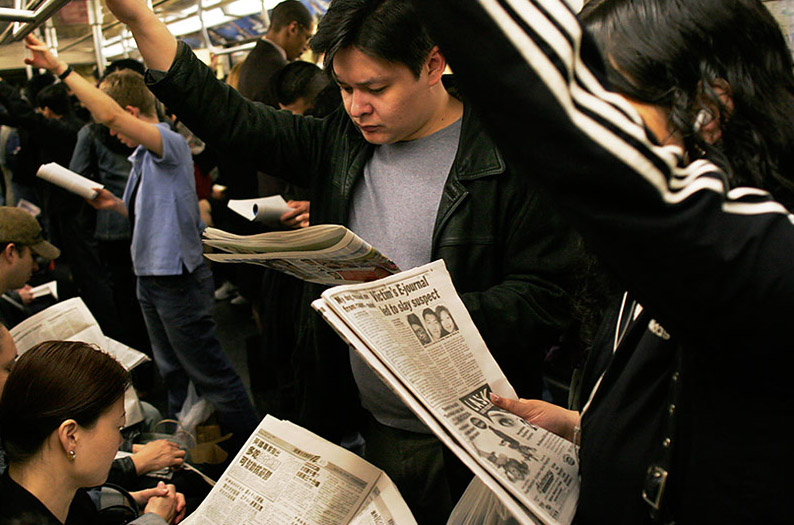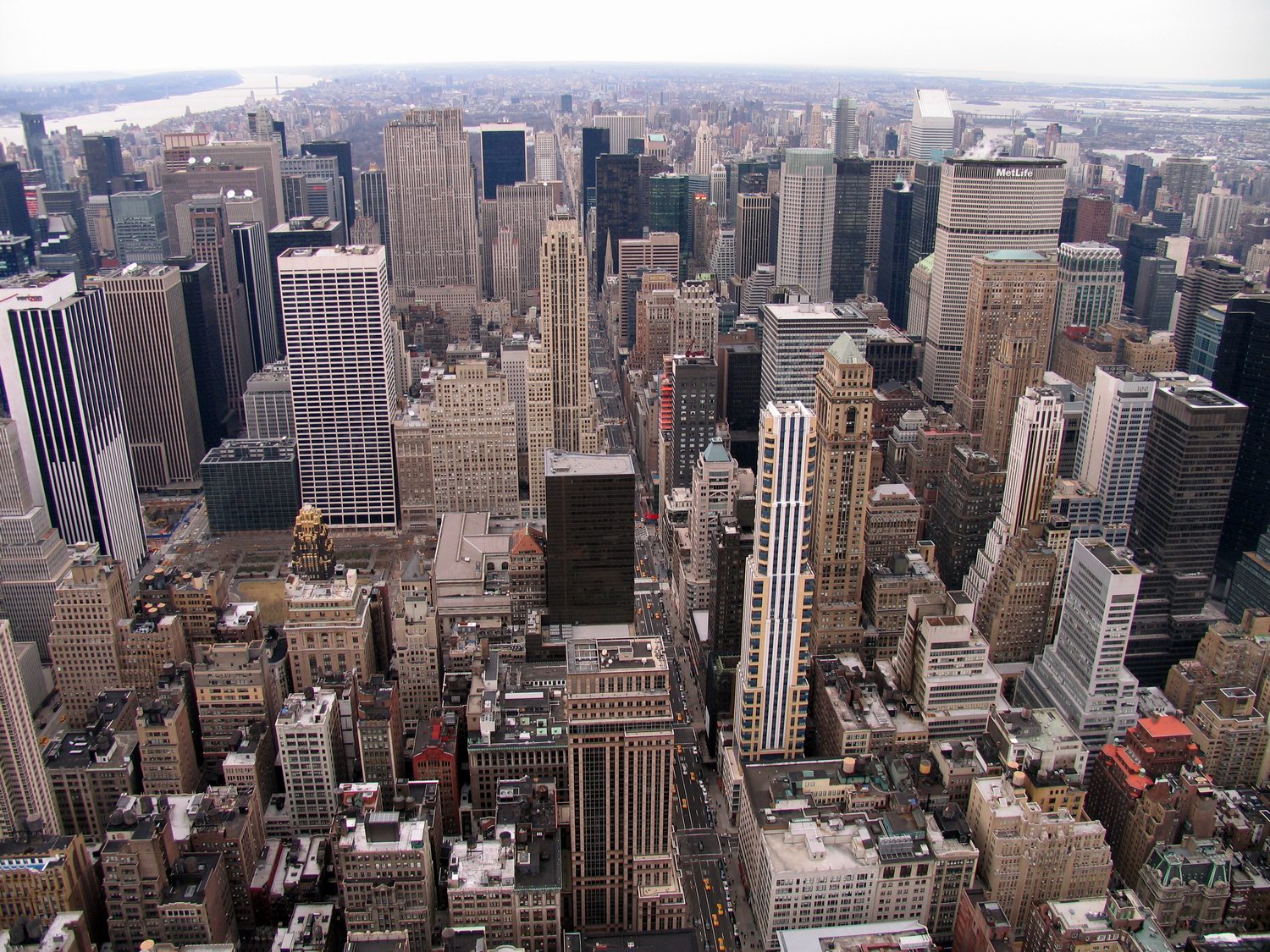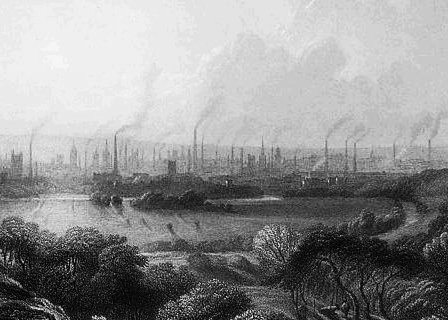|
Marchetti's Constant
Marchetti's constant is the average time spent by a person for commuting each day. Its value is approximately one hour, or half an hour for a one-way trip. It is named after Italian physicist Cesare Marchetti, though Marchetti himself attributed the "one hour" finding to transportation analyst and engineer Yacov Zahavi. Marchetti posits that although forms of urban planning and transport may change, and although some live in villages and others in cities, people gradually adjust their lives to their conditions (including location of their homes relative to their workplace) such that the average travel time stays approximately constant. Ever since Neolithic times, people have kept the average time spent per day for travel the same, even though the distance may increase due to the advancements in the means of transportation. In his 1934 book ''Technics and Civilization'', Lewis Mumford attributes this observation to Bertrand Russell: :Mr. Bertrand Russell has noted that each improvemen ... [...More Info...] [...Related Items...] OR: [Wikipedia] [Google] [Baidu] |
Commuting
Commuting is periodically recurring travel between one's place of residence and place of work or study, where the traveler, referred to as a commuter, leaves the boundary of their home community. By extension, it can sometimes be any regular or often repeated travel between locations, even when not work-related. The modes of travel, time taken and distance traveled in commuting varies widely across the globe. Most people in least-developed countries continue to walk to work. The cheapest method of commuting after walking is usually by bicycle, so this is common in low-income countries, but is also increasingly practised by people in wealthier countries for environmental and health reasons. In middle-income countries, motorcycle commuting is very common. The next technology adopted as countries develop is more dependent on location: in more populous, older cities, especially in Eurasia mass transit (rail, bus, etc.) predominates, while in smaller, younger cities, and larg ... [...More Info...] [...Related Items...] OR: [Wikipedia] [Google] [Baidu] |
Lewis–Mogridge Position
The Lewis–Mogridge position, named after David Lewis and Martin J. H. Mogridge, was formulated in 1990 and observes that as more roads are built, more traffic consequently fills these roads. Speed gains from some new roads can disappear within months, if not weeks. Sometimes, new roads help to reduce traffic jams, but, in most cases, the congestion is only shifted to another junction. The position reads ''traffic expands to meet the available road space'' (Mogridge, 1990). It is generally referred to as induced demand in the transport literature, and was posited as the "Iron Law of Congestion" by Anthony Downs. It is a special case of Jevons paradox (where the resource in question is traffic capacity), and relates to Marchetti's constant (average commute times are similar in widely varying conditions). Following the position, it is not generally concluded that new roads are never justified but that their development needs to consider the whole traffic system, which means unders ... [...More Info...] [...Related Items...] OR: [Wikipedia] [Google] [Baidu] |
Transport Economics
Transport economics is a branch of economics founded in 1959 by American economist John R. Meyer that deals with the allocation of resources within the transport sector. It has strong links to civil engineering. Transport economics differs from some other branches of economics in that the assumption of a spaceless, instantaneous economy does not hold. People and goods flow over networks at certain speeds. Demands peak. Advance ticket purchase is often induced by lower fares. The networks themselves may or may not be competitive. A single trip (the final good, in the consumer's eyes) may require the bundling of services provided by several firms, agencies and modes. Although transport systems follow the same supply and demand theory as other industries, the complications of network effects and choices between dissimilar goods (e.g. car and bus travel) make estimating the demand for transportation facilities difficult. The development of models to estimate the likely choices bet ... [...More Info...] [...Related Items...] OR: [Wikipedia] [Google] [Baidu] |
Commuting
Commuting is periodically recurring travel between one's place of residence and place of work or study, where the traveler, referred to as a commuter, leaves the boundary of their home community. By extension, it can sometimes be any regular or often repeated travel between locations, even when not work-related. The modes of travel, time taken and distance traveled in commuting varies widely across the globe. Most people in least-developed countries continue to walk to work. The cheapest method of commuting after walking is usually by bicycle, so this is common in low-income countries, but is also increasingly practised by people in wealthier countries for environmental and health reasons. In middle-income countries, motorcycle commuting is very common. The next technology adopted as countries develop is more dependent on location: in more populous, older cities, especially in Eurasia mass transit (rail, bus, etc.) predominates, while in smaller, younger cities, and larg ... [...More Info...] [...Related Items...] OR: [Wikipedia] [Google] [Baidu] |
Urban Geography
Urban geography is the subdiscipline of geography that derives from a study of cities and urban processes. Urban geographers and urbanists examine various aspects of urban life and the built environment. Scholars, activists, and the public have participated in, studied, and critiqued flows of economic and natural resources, human and non-human bodies, patterns of development and infrastructure, political and institutional activities, governance, decay and renewal, and notions of socio-spatial inclusions, exclusions, and everyday life. Urban geography includes different other fields in geography such as the physical, social, and economic aspects of urban geography. The physical geography of urban environments is essential to understand why a town is placed in a specific area, and how the conditions in the environment play an important role with regards to whether or not the city successfully develops. Social geography examines societal and cultural values, diversity, and other cond ... [...More Info...] [...Related Items...] OR: [Wikipedia] [Google] [Baidu] |
Urban Planning
Urban planning, also known as town planning, city planning, regional planning, or rural planning, is a technical and political process that is focused on the development and design of land use and the built environment, including air, water, and the infrastructure passing into and out of urban areas, such as transportation, communications, and distribution networks and their accessibility. Traditionally, urban planning followed a top-down approach in master planning the physical layout of human settlements. The primary concern was the public welfare, which included considerations of efficiency, sanitation, protection and use of the environment, as well as effects of the master plans on the social and economic activities. Over time, urban planning has adopted a focus on the social and environmental bottom-lines that focus on planning as a tool to improve the health and well-being of people while maintaining sustainability standards. Sustainable development was added as one of th ... [...More Info...] [...Related Items...] OR: [Wikipedia] [Google] [Baidu] |
Urban Sprawl
Urban sprawl (also known as suburban sprawl or urban encroachment) is defined as "the spreading of urban developments (such as houses and shopping centers) on undeveloped land near a city." Urban sprawl has been described as the unrestricted growth in many urban areas of housing, commercial development, and roads over large expanses of land, with little concern for urban planning. In addition to describing a special form of urbanization, the term also relates to the social and environmental consequences associated with this development. Medieval suburbs suffered from loss of protection of city walls, before the advent of industrial warfare. Modern disadvantages and costs include increased travel time, transport costs, pollution, and destruction of the countryside. The cost of building urban infrastructure for new developments is hardly ever recouped through property taxes, amounting to a subsidy for the developers and new residents at the expense of existing property taxpayers. In ... [...More Info...] [...Related Items...] OR: [Wikipedia] [Google] [Baidu] |
Braess's Paradox
Braess's paradox is the observation that adding one or more roads to a road network can slow down overall traffic flow through it. The paradox was discovered by the German mathematician Dietrich Braess in 1968. The paradox may have analogies in electrical power grids and biological systems. It has been suggested that, in theory, the improvement of a malfunctioning network could be accomplished by removing certain parts of it. The paradox has been used to explain instances of improved traffic flow when existing major roads are closed. Discovery and definition Dietrich Braess, a mathematician at Ruhr University, Germany, noticed the flow in a road network could be impeded by adding a new road, when he was working on traffic modelling. His idea was that if each driver is making the optimal self-interested decision as to which route is quickest, a shortcut could be chosen too often for drivers to have the shortest travel times possible. More formally, the idea behind Braess's di ... [...More Info...] [...Related Items...] OR: [Wikipedia] [Google] [Baidu] |
World Bank
The World Bank is an international financial institution that provides loans and grants to the governments of low- and middle-income countries for the purpose of pursuing capital projects. The World Bank is the collective name for the International Bank for Reconstruction and Development (IBRD) and International Development Association (IDA), two of five international organizations owned by the World Bank Group. It was established along with the International Monetary Fund at the 1944 Bretton Woods Conference. After a slow start, its first loan was to France in 1947. In the 1970s, it focused on loans to developing world countries, shifting away from that mission in the 1980s. For the last 30 years, it has included NGOs and environmental groups in its loan portfolio. Its loan strategy is influenced by the Sustainable Development Goals as well as environmental and social safeguards. , the World Bank is run by a president and 25 executive directors, as well as 29 various vice ... [...More Info...] [...Related Items...] OR: [Wikipedia] [Google] [Baidu] |
Robert Cervero
Robert Cervero is an author, consultant, and educator in sustainable transportation policy and planning. During his years as a faculty member in city and regional planning at the University of California, Berkeley, he gained recognition for his work in the sphere of urban transportation and land-use planning. His research has spanned the topics of induced demand, transit-oriented development (TOD), transit villages, paratransit, car sharing, and suburban growth. Academic and professional life Currently professor emeritus of City and Regional Planning, Cervero twice chaired Berkeley's urban planning department and also served as director of two research units: the University of California Transportation Center (UCTC, 2009-2017) and the Institute of Urban and Regional Development (IURD, 2009-2014). He held Berkeley planning department's first distinguished chair appointment, the Carmel P. Friesen Chair in Urban Studies from 2011 to 2016. Among his books are ''Beyond Mobility'' ( ... [...More Info...] [...Related Items...] OR: [Wikipedia] [Google] [Baidu] |
Jevons Paradox
In economics, the Jevons paradox (; sometimes Jevons effect) occurs when technological progress or government policy increases the efficiency with which a resource is used (reducing the amount necessary for any one use), but the falling cost of use increases its demand, increasing, rather than reducing, resource use. The Jevons' effect is perhaps the most widely known paradox in environmental economics. However, governments and environmentalists generally assume that efficiency gains will lower resource consumption, ignoring the possibility of the effect arising. In 1865, the English economist William Stanley Jevons observed that technological improvements that increased the efficiency of coal use led to the increased consumption of coal in a wide range of industries. He argued that, contrary to common intuition, technological progress could not be relied upon to reduce fuel consumption. The issue has been re-examined by modern economists studying consumption rebound effects f ... [...More Info...] [...Related Items...] OR: [Wikipedia] [Google] [Baidu] |
Italian People
, flag = , flag_caption = The national flag of Italy , population = , regions = Italy 55,551,000 , region1 = Brazil , pop1 = 25–33 million , ref1 = , region2 = Argentina , pop2 = 20–25 million , ref2 = , region3 = United States , pop3 = 17-20 million , ref3 = , region4 = France , pop4 = 1-5 million , ref4 = , region5 = Venezuela , pop5 = 1-5 million , ref5 = , region6 = Paraguay , pop6 = 2.5 million , region7 = Colombia , pop7 = 2 million , ref7 = , region8 = Canada , pop8 = 1.5 million , ref8 = , region9 = Australia , pop9 = 1.0 million , ref9 = , region10 = Uruguay , pop10 = 1.0 million , r ... [...More Info...] [...Related Items...] OR: [Wikipedia] [Google] [Baidu] |







